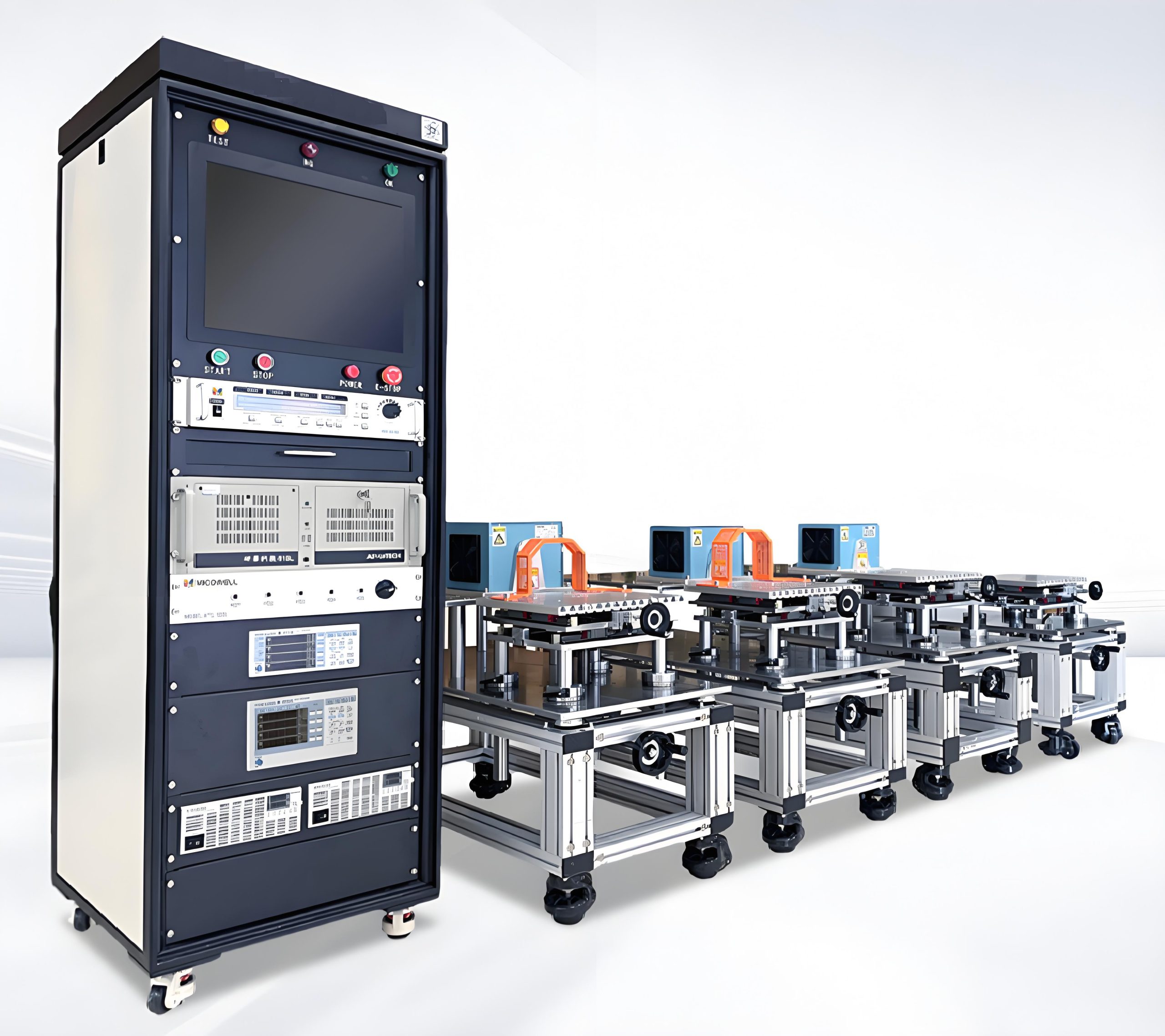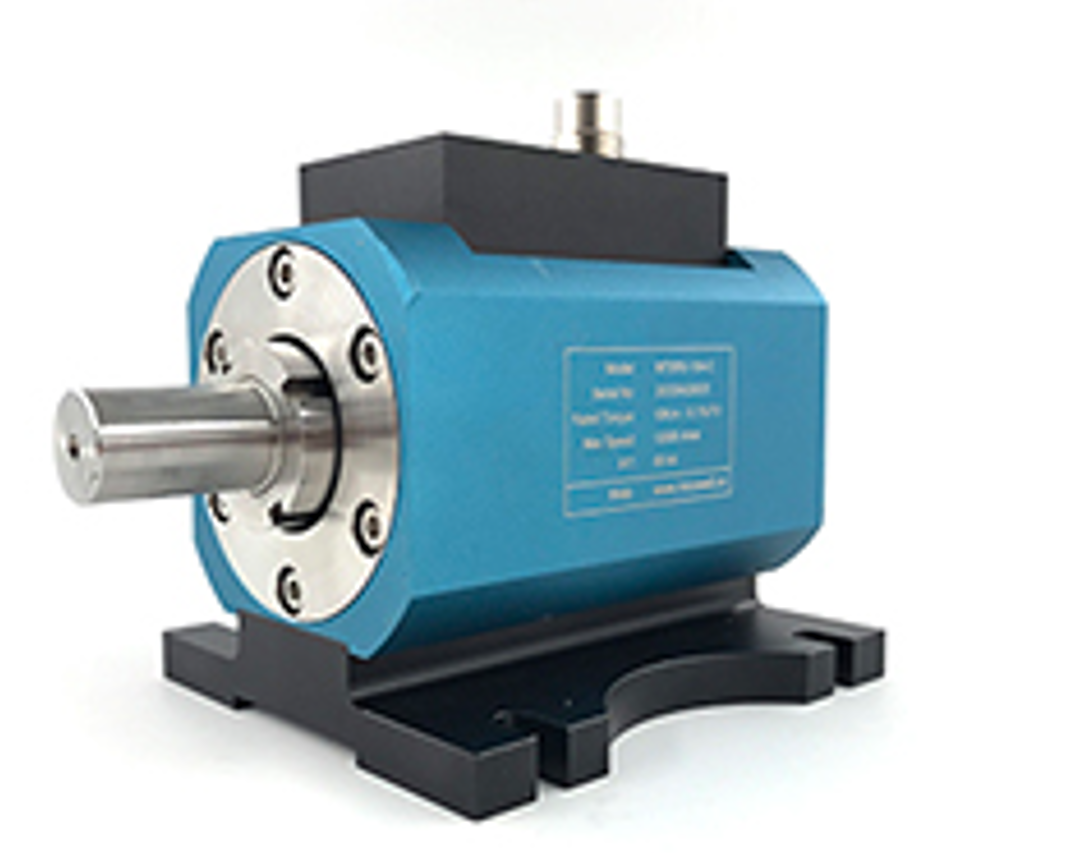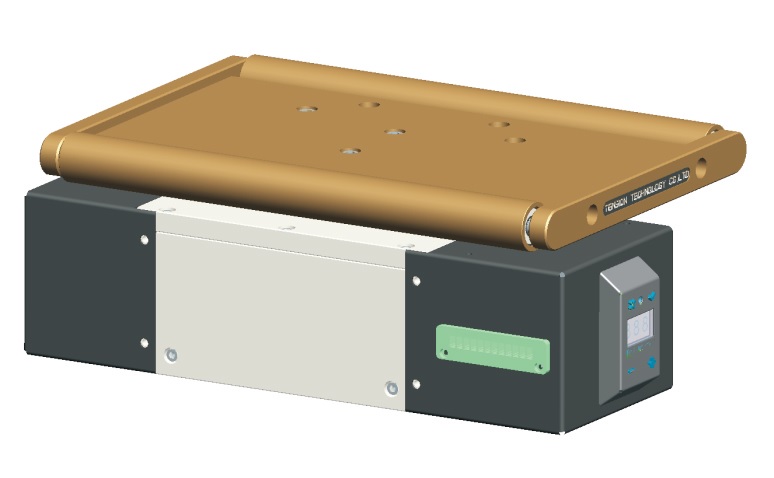🔋 Powering Precision Unleashing the Potential of Hysteresis Brakes Dynamometers and Motor Test Systems
 In the pulsating heart of industrial innovation, where every revolution and torque curve matters, the unsung heroes of precision engineering quietly shape the future. Hysteresis brakes, dynamometers, clutches, and motor test systems form the backbone of industries ranging from aerospace to renewable energy. These tools don’t just “test” or “measure”—they validate dreams, optimize performance, and ensure that the machines driving our world operate flawlessly. Let’s dive into how these technologies redefine boundaries. ━━━━━━━━━━━━━━━━━━━━ THE SCIENCE OF CONTROL: HYSTERESIS BRAKES AND CLUTCHES 🌀 Hysteresis brakes and clutches are the silent choreographers of motion control. Unlike traditional friction-based systems, hysteresis devices use magnetic fields to generate torque, eliminating wear and tear while delivering unmatched smoothness. Imagine a braking system that doesn’t rely on physical contact—no heat-induced degradation, no maintenance downtime. That’s the promise of hysteresis brakes. Applications: – **Robotics**: Delicate assembly lines require precise force modulation. Hysteresis clutches enable gradual engagement, preventing jerky movements that could damage sensitive components. – **Medical Devices**: MRI machines and surgical robots demand whisper-quiet operation. Hysteresis systems deliver vibration-free control, critical for high-stakes environments. – **Aerospace**: Testing satellite deployment mechanisms? Hysteresis brakes simulate zero-gravity conditions with unparalleled accuracy. But how does it work? At its core, a hysteresis brake uses a rotor made of magnetic material passing through a stator’s magnetic field. The resulting hysteresis loss—energy dissipated as heat—creates a consistent, contactless braking force. No friction. No compromise. ━━━━━━━━━━━━━━━━━━━━ MEASURING GREATNESS: HYSTERESIS DYNAMOMETERS AND MOTOR TEST SYSTEMS ⚡ If hysteresis brakes are the artists, dynamometers are the critics. A hysteresis dynamometer doesn’t just measure torque and speed—it dissects performance under extreme conditions. Whether validating an electric vehicle’s motor or stress-testing wind turbine generators, these devices provide data that separates prototypes from market-ready solutions.
In the pulsating heart of industrial innovation, where every revolution and torque curve matters, the unsung heroes of precision engineering quietly shape the future. Hysteresis brakes, dynamometers, clutches, and motor test systems form the backbone of industries ranging from aerospace to renewable energy. These tools don’t just “test” or “measure”—they validate dreams, optimize performance, and ensure that the machines driving our world operate flawlessly. Let’s dive into how these technologies redefine boundaries. ━━━━━━━━━━━━━━━━━━━━ THE SCIENCE OF CONTROL: HYSTERESIS BRAKES AND CLUTCHES 🌀 Hysteresis brakes and clutches are the silent choreographers of motion control. Unlike traditional friction-based systems, hysteresis devices use magnetic fields to generate torque, eliminating wear and tear while delivering unmatched smoothness. Imagine a braking system that doesn’t rely on physical contact—no heat-induced degradation, no maintenance downtime. That’s the promise of hysteresis brakes. Applications: – **Robotics**: Delicate assembly lines require precise force modulation. Hysteresis clutches enable gradual engagement, preventing jerky movements that could damage sensitive components. – **Medical Devices**: MRI machines and surgical robots demand whisper-quiet operation. Hysteresis systems deliver vibration-free control, critical for high-stakes environments. – **Aerospace**: Testing satellite deployment mechanisms? Hysteresis brakes simulate zero-gravity conditions with unparalleled accuracy. But how does it work? At its core, a hysteresis brake uses a rotor made of magnetic material passing through a stator’s magnetic field. The resulting hysteresis loss—energy dissipated as heat—creates a consistent, contactless braking force. No friction. No compromise. ━━━━━━━━━━━━━━━━━━━━ MEASURING GREATNESS: HYSTERESIS DYNAMOMETERS AND MOTOR TEST SYSTEMS ⚡ If hysteresis brakes are the artists, dynamometers are the critics. A hysteresis dynamometer doesn’t just measure torque and speed—it dissects performance under extreme conditions. Whether validating an electric vehicle’s motor or stress-testing wind turbine generators, these devices provide data that separates prototypes from market-ready solutions.  Key Features: – **Adaptive Loading**: Simulate real-world scenarios, from sudden acceleration spikes to prolonged high-torque operations. – **Energy Recovery**: Modern dynamometers can feed absorbed energy back into the grid, slashing testing costs by up to 40%. – **Ultra-Fine Resolution**: Detect torque variations as low as 0.001 Nm, crucial for micro-motor applications in drones or wearable tech. Case Study: A leading EV manufacturer reduced development time by 22% using hysteresis dynamometers to identify harmonic vibrations in their drivetrain. The result? A quieter, more efficient motor that outperformed competitors in range tests. ━━━━━━━━━━━━━━━━━━━━ MOTOR TEST EQUIPMENT: WHERE INNOVATION MEETS VALIDATION 🔧 Motor test systems are the final gatekeepers before a product reaches consumers. These systems don’t just check boxes—they interrogate every aspect of performance: – **Efficiency Mapping**: How does the motor perform at 10% load vs. 100%? – **Thermal Profiling**: Will it overheat during a summer traffic jam? – **Durability Testing**: Can it withstand 10,000 hours of continuous operation? Advanced systems integrate AI-driven analytics, predicting failure points before they occur. For instance, a smart motor test rig recently flagged a bearing misalignment in a HVAC motor during prototype testing, saving the manufacturer $2M in potential recalls. ━━━━━━━━━━━━━━━━━━━━ THE SYMBIOSIS OF HARDWARE AND SOFTWARE 💻 Today’s motor test systems are more than hardware. They’re ecosystems. Cloud-connected dynamometers allow engineers in Berlin to monitor tests in Tokyo in real-time. Machine learning algorithms compare performance data against millions of historical datasets, spotting anomalies invisible to the human eye. Example: A drone motor manufacturer used predictive analytics to tweak coil winding patterns, boosting efficiency by 15% without changing materials. The secret? Software that correlated test data with aerodynamic models.
Key Features: – **Adaptive Loading**: Simulate real-world scenarios, from sudden acceleration spikes to prolonged high-torque operations. – **Energy Recovery**: Modern dynamometers can feed absorbed energy back into the grid, slashing testing costs by up to 40%. – **Ultra-Fine Resolution**: Detect torque variations as low as 0.001 Nm, crucial for micro-motor applications in drones or wearable tech. Case Study: A leading EV manufacturer reduced development time by 22% using hysteresis dynamometers to identify harmonic vibrations in their drivetrain. The result? A quieter, more efficient motor that outperformed competitors in range tests. ━━━━━━━━━━━━━━━━━━━━ MOTOR TEST EQUIPMENT: WHERE INNOVATION MEETS VALIDATION 🔧 Motor test systems are the final gatekeepers before a product reaches consumers. These systems don’t just check boxes—they interrogate every aspect of performance: – **Efficiency Mapping**: How does the motor perform at 10% load vs. 100%? – **Thermal Profiling**: Will it overheat during a summer traffic jam? – **Durability Testing**: Can it withstand 10,000 hours of continuous operation? Advanced systems integrate AI-driven analytics, predicting failure points before they occur. For instance, a smart motor test rig recently flagged a bearing misalignment in a HVAC motor during prototype testing, saving the manufacturer $2M in potential recalls. ━━━━━━━━━━━━━━━━━━━━ THE SYMBIOSIS OF HARDWARE AND SOFTWARE 💻 Today’s motor test systems are more than hardware. They’re ecosystems. Cloud-connected dynamometers allow engineers in Berlin to monitor tests in Tokyo in real-time. Machine learning algorithms compare performance data against millions of historical datasets, spotting anomalies invisible to the human eye. Example: A drone motor manufacturer used predictive analytics to tweak coil winding patterns, boosting efficiency by 15% without changing materials. The secret? Software that correlated test data with aerodynamic models.  ━━━━━━━━━━━━━━━━━━━━ SUSTAINABILITY: THE UNEXPECTED HERO 🌱 Hysteresis-based systems aren’t just about precision—they’re about responsibility. Contactless operation means no lubricants leaching into ecosystems. Regenerative dynamometers cut energy consumption, aligning with Net Zero goals. One automotive supplier reduced their testing carbon footprint by 34% by switching to hysteresis-driven test benches. ━━━━━━━━━━━━━━━━━━━━ CHOOSING THE RIGHT PARTNER: WHAT TO LOOK FOR 🤝 Not all hysteresis systems are created equal. When selecting equipment, prioritize: – **Modularity**: Can the system grow with your needs? – **Certifications**: ISO 17025 compliance for test rigs? Non-negotiable. – **Support**: 24/7 technical assistance across time zones. closed loop tensioner learned this the hard way. After opting for a “budget” dynamometer, they faced six months of calibration drift issues. Switching to a Tier 1 supplier restored reliability—and their reputation.
━━━━━━━━━━━━━━━━━━━━ SUSTAINABILITY: THE UNEXPECTED HERO 🌱 Hysteresis-based systems aren’t just about precision—they’re about responsibility. Contactless operation means no lubricants leaching into ecosystems. Regenerative dynamometers cut energy consumption, aligning with Net Zero goals. One automotive supplier reduced their testing carbon footprint by 34% by switching to hysteresis-driven test benches. ━━━━━━━━━━━━━━━━━━━━ CHOOSING THE RIGHT PARTNER: WHAT TO LOOK FOR 🤝 Not all hysteresis systems are created equal. When selecting equipment, prioritize: – **Modularity**: Can the system grow with your needs? – **Certifications**: ISO 17025 compliance for test rigs? Non-negotiable. – **Support**: 24/7 technical assistance across time zones. closed loop tensioner learned this the hard way. After opting for a “budget” dynamometer, they faced six months of calibration drift issues. Switching to a Tier 1 supplier restored reliability—and their reputation.  ━━━━━━━━━━━━━━━━━━━━ FUTURE FRONTIERS: WHAT’S NEXT? 🚀 The horizon shimmers with possibilities: – **Digital Twins**: Virtual replicas of motors tested in real-time alongside physical units. – **Quantum Sensors**: Measuring magnetic fields at atomic levels for nano-motor applications. – **AI Co-Pilots**: Systems that don’t just test but suggest design optimizations autonomously. A startup in Silicon Valley recently demoed a self-learning dynamometer that redesigned a motor’s cooling fins during testing, cutting thermal losses by 19%. The future isn’t coming—it’s already here. ━━━━━━━━━━━━━━━━━━━━ EPILOGUE: PRECISION AS A PHILOSOPHY 🎯 In a world racing toward automation and sustainability, hysteresis technologies and motor test systems are the compass and the map. They transform “good enough” into “perfection,” one torque curve at a time. Whether you’re building the next-generation hypercar or a life-saving medical pump, remember: Behind every revolution is a system that dared to measure, test, and validate it. The question isn’t whether you need these tools—it’s whether you can afford to innovate without them.
━━━━━━━━━━━━━━━━━━━━ FUTURE FRONTIERS: WHAT’S NEXT? 🚀 The horizon shimmers with possibilities: – **Digital Twins**: Virtual replicas of motors tested in real-time alongside physical units. – **Quantum Sensors**: Measuring magnetic fields at atomic levels for nano-motor applications. – **AI Co-Pilots**: Systems that don’t just test but suggest design optimizations autonomously. A startup in Silicon Valley recently demoed a self-learning dynamometer that redesigned a motor’s cooling fins during testing, cutting thermal losses by 19%. The future isn’t coming—it’s already here. ━━━━━━━━━━━━━━━━━━━━ EPILOGUE: PRECISION AS A PHILOSOPHY 🎯 In a world racing toward automation and sustainability, hysteresis technologies and motor test systems are the compass and the map. They transform “good enough” into “perfection,” one torque curve at a time. Whether you’re building the next-generation hypercar or a life-saving medical pump, remember: Behind every revolution is a system that dared to measure, test, and validate it. The question isn’t whether you need these tools—it’s whether you can afford to innovate without them.